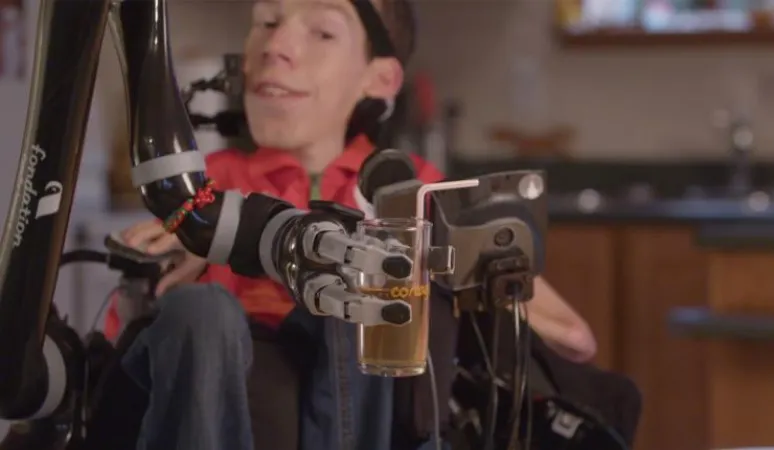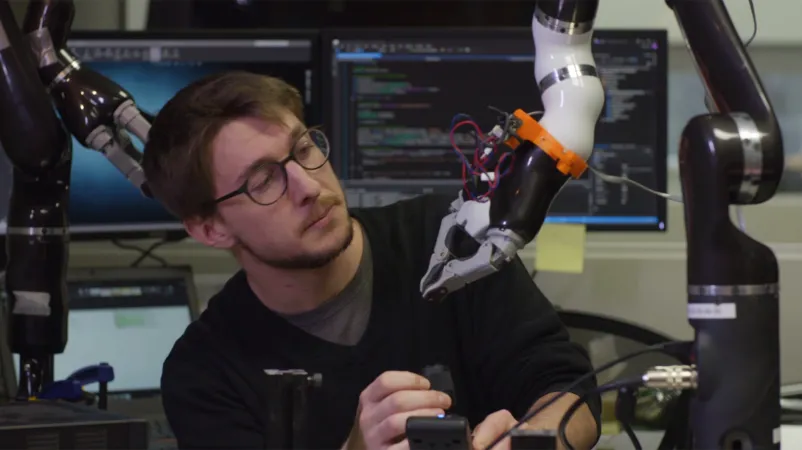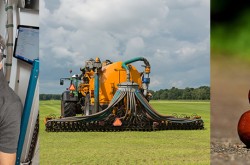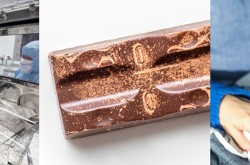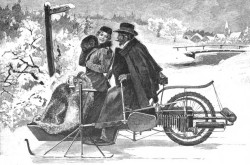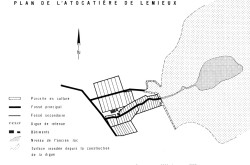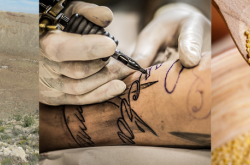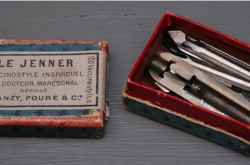Montreal robot arm changing global lives
This article was originally written and submitted as part of a Canada 150 Project, the Innovation Storybook, to crowdsource stories of Canadian innovation with partners across Canada. The content has since been migrated to Ingenium’s Channel, a digital hub featuring curated content related to science, technology and innovation.
Kinova is featured in Innovation150’s national public awareness campaign. Learn more.
Innovation runs in Charles Deguire’s family. While fighting muscular dystrophy, Deguire’s uncle Jaco built himself a robot arm out of a hot dog pincher, bicycle cables, a desk lamp arm and a variety of electronics.
The crude manipulator convinced Deguire to become an engineer so he could help bring mobility to others like his uncle with the desire to have a better standard of living.
“We’re constantly striving to improve quality of life and effect positive change in the world we inhabit,” says Deguire, now the young CEO and co-founder of Montreal-based Kinova Robotics.
Machine with a human touch
The company’s JACO arm – named after Deguire’s uncle – is perhaps the most capable wheelchair-mounted robotic limb available today, allowing users to control a stylish, human-looking arm with the same joystick that they use to move their electric wheelchair.
Made of strong but lightweight materials such as carbon-fibre and aluminum, the arm offers people who have little movement the ability to eat, shave, open doors, switch lights on-or-off or handle paperwork in an office, among other freedoms.
The arms are hand-assembled and tested in Quebec. (At peak-capacity, engineers at Kinova can build about five a day.)
Its interface is intuitive enough that users can learn to turn door handles and pick up basic objects within a few minutes.
“We created JACO to address a need that wasn’t being met,” says Kinova Vice President of Business Development François Boucher. “We design and build a product for the user,” he says, noting the team developed the actuators, carbon-fibre shell, aluminum structure, and controls from scratch according to what users told them they wanted to be able to do.
Canada’s next famous robot arm
150 users in the Netherlands now eat three meals a day using Kinova’s JACO arm, who would not have otherwise been able to feed themselves.
Over the last 10 years, the company has touched more than 10,000 people, including Kinova user and Canadian Paralympian Éric Bussière.
“It changes everything,” says Bussière. “Some people don’t believe it can help me a lot, but I tell them ‘what can you do with your arm?’ I have one arm and I can do the same things as you.”
Bussière was born with only very little use of the fingers on one hand and almost no reach. Despite these setbacks, he is an accomplished player of BC3, a precision ball sport for disabled people in wheelchairs. While Bussière won Parapan Am Games gold and played the sport at the Paralympics in Rio, he struggled with many daily tasks.
An investment in dignity
Today, Bussière is able to switch on lights, turn door handles and serve himself basic foods and drinks with the assistance of a custom-installed JACO arm.
“They think I’m controlling it with my mind, but then I show them I do it with my hand down with the same controls as my wheelchair,” says Bussière. “When they see that, they think it’s amazing.”
While users have the option of operating the JACO through a controller connected to the arm, they can also choose a specialized joystick that can control their wheelchair, then use a button to switch it to control the arm.
Deguire and the Kinova team recently won a Governor General’s Award and has been named among the 50 most influential companies by Robotics Business Review two years in a ow.
“Our mentality has always been to take care of our users and employees,” says Boucher. “To us, they’re all VIPs.”
One of the most dramatic benefits of the Kinova arm, Bussière says, is the ability to answer his own door when people come to visit him.
“It can literally open doors for me…It has opened doors in my life.”



